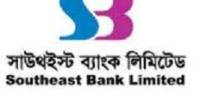Introduction:
Bangladesh is a least development country, Whose economy country is agro-based. The agriculture system is primitive and frequently affected by natural disaster. Poverty is the main problems of this country about 47.6% of its population is living below the poverty line whoever as about18%of the population is living below the hard core poverty line(with less then 1800 calories per head per day).
After the devastating flood 1998-1999, the economic activities of the country resumed by taking various rehabilitation program and bumper production of the agriculture sector helps to recover that below. Bangladesh economy has faced severe set back again after the terrorist attack on world trade center of USA on september11,2001 and afghan war. This event has changed the world economic scenarios and caused global economic recession. This global recession has severely affected export system& Bangladesh economy like made garments industry, frozen food, Manpower export hotel and tourism sector etc. Due to global recession foreign financial assistance also severely affected.
To overcome this situation government has taken various sect oral reform plan (closer of Amaze jute Mill is an example of it). Govt. also prepares the current fiscal years budget to decrease the foreign aid dependency. Although global recession has caused the ever lowest foreign currency reserve of US$1057n million in October, 2001 which is increased to US$1478 million in April 2002 by various positive steps taken by the government anti money laundering law, emphasis on remittance through proper banking channel.
According to Bangladesh economic analysis 2002 of ministry of finance, income is increased by 1.73% and population is increased 1.71%. Per capital GDP, GNP and NNI are shown in the following table:
Fiscal Year | GDP | GNI | NNI | |||
US$ | Taka | US$ | Taka | US$ | Taka | |
2001 | 363 | 19595 | 377 | 20332 | 349 | 18809 |
2002 | 362 | 20673 | 375 | 21448 | 347 | 19805 |
Overview of Financial institutes of Bangladesh:
Financial institutes play an important role of the economic development of any country. The objective of these institutions is to accumulate the scattered deposit and invest it in a productive manner for economic emancipation.
There are 52 schedule banks(January 2001) operate in Bangladesh of them 4 nationalized commercial Banks, 5 Specialized Banks, 30 private Banks and 12 Foreign Banks. The number of Branches of those Banks is 6242. Of which 2511 (40.2% of total) are in urban areas and rest 3731(59.8% of total) are in rural areas.
Up to February 2002, of fiscal 2001-2002, total deposit and loan of all Banks is Taka 85259.8 and Taka 69392.6 Cr. Respectively.
For proper monitoring the operations of Banks, Bangladesh bank introduces ”Problem Bank Monitoring Division” in addition to Camel Rating. To increase the economic activities Bangladesh Bank reduces the Bank rate to 6% from 7%.
To increase Customer service Banks are using Various modern techniques like on line banking ATM, Money Gram, Credit Card etc.
List of Banks operating in Bangladesh:
Nationalized Commercial Banks (NCBS)
- Sonali Bank.
- Janata Bank.
- Agrani Bank.
- Rupali Bank.
- Basic Bank Limited.
Private Commercial Bank (PCBS)
1. Pubali Bank Limited.
2. Uttara Bank Limited.
3. Arab Bangladesh Bank Limited.
4. National Bank Limited.
5. The City Bank Limited.
6. International Finance investment and Commerce Bank Limited.
7. United Commercial Bank Limited.
8. Eastern Bank Limited.
9. National Credit and Commerce Bank Limited.
10. Prime Bank Limited.
11. South East Bank Limited.
12. Dhaka Bank Limited.
13. Dutch Bangla Bank Limited
14. Mercantile Bank Limited.
15. Standard Bank Limited.
16. One Bank Limited.
17. Mutual Trust Bank Limited.
18. First Security Bank Limited.
19. The Trust Bank Limited.
20. Premier Bank Limited.
21. Bank Asia Limited.
22. Bangladesh commerce Bank Limited.
23. Export and Import Bank Of Bangladesh Limited.
24. Shahjalal Bank Limited.
25. Jamuna Bank Limited.
26. BRAC Bank Limited.
27. Islami Bank Bangladesh Limited.
28. The Oriental Bank Limited.
29. Al-Arafah Islami Bank Bangladesh Limited.
30. Social Investment Bank Limited.
Foreign Commercial Banks: (FCBS)
1. American Express Bank.
2. Standard Chartered Bank.
3. Habib Bank Limited.
4. State Bank of India.
5. Credit Agricole Indosuez.
6. National Bank of Pakistan.
7. Muslim Commercial Bank.
8. Citibank NA.
9. Hanvit Bank.
10. The Hongkong and Shanghai Banking corporation (HSBC).
11. Shamil Bank of Bahrain E.c.
12. Bank Alfalah.
Specialized Bank:
1. Bangladesh Shilpa Bank.
2. Bangladesh Shilpa Rin Shonghstha.
3. Bank of Small Industries and Cottage.
4. Bangladesh Krishi Bank.
5. Rajshahi Krishi Unnayan Bank (RAKUB).
A Bank is usually defined as a financial institution which deals in money. Today however the function of a Bank have increased so much that it is considered a very vital agent of development in country like ours. Because of their positive involvement in trade industry, business finance and a host of other allied services, Banks today form a very important part of an economy.
A bank like private commercial bank helps to develop economy as follows:

The nationalized banks, countries margin operational banking units could not demonstrates and achieve optimistic results in terms of overall economic growth. The gloomy picture of nationalized banks is mainly due to:-
- Lack of quality of services.
- Minimum of commitment toward institutions.
- Management inefficiency.
- Excessive intervention of collective bargaining agent(CBA).
- Lack of security.
- Documentation of loans and advances debarring legal action in case of default.
- Slow rate of recovery of loan.
- Lack of supervision and monitoring of loans and advances.
- Directive loans.
- Political instability.
- Transitional inconsistency while formulating policy issue on banking.
Due to inefficient and continuous loosing concern of public sector, the main objective of privatization policy was-
- To reduce deficit of the Govt. to meet continuous loss of public
enterprises.
To improve operative efficiency of enterprise.
- To introduce competitiveness in all spheres of economic activities except few areas where Govt. control of economic activities was unavoidable.
In the country 80s it was increasingly felt that a number of PCBs might have improve their position putting nationalized banks into competition. The launching of PCBs has finally created a significant impact in quality of services in banking. Banking being a service industry, it is not easy to quantity to performance of this sector like manufacturing. The performance of the banking sector in terms of generating of profit expansion of bank branches, mobilization of deposits, deployment of advances, involvement in foreign trade and generating of employment.
It is revealed from the loan operations of banks. The PCBs provide operation mainly for trading(internal trading, export and import trade)and construction while the NCBs are providing finance for priority areas like agriculture, industry and export import tasks.
PCBs have shown some efficiency in terms of branch expansion employment generation, mobilization of deposits and deployment of advances but their activities remained concentrated in city areas. They could not provide finance for priority sector like agriculture.
The key to success of private sector banks is identified as a professional efficiency in choosing various risk assets, personalized quantity of services, result oriented business strategy and achievement against stipulated target. But by rapidly issuing fresh licenses to the promoters of private banks, the quality of entrepreneurs is not being ensured and developed. As a result too many banks are chasing same customers/entrepreneurs within limited deposit base.
Now a day, the banking business exclusively depends on quality of services in terms of new innovative strategies for boosting banking operations compatible to international standard. Modern technology, equipment and innovation like computerized money counting machine, automatic teller machine (ATM) etc. are being utilized to a great extent for survival and to face competitors.
PCBs have already explored new financial products by introducing master card, credit card to attract customer/entrepreneurs. Many PCBs have implemented various attractive schemes acceptable to the existing and prospective customers such as the customer credit scheme, marriage and educational scheme, micro credit scheme and small loan scheme etc. In this respect PCBs are keen for development of human resources to train and equip their manpower with new ideas and products to Enable them to contribute to the greater innovation.
The PCBs are talking part in stimulating foreign exchange reserve by financing 100% export oriented RMG industries. Neutrally 65% of export earnings of Bangladesh is generated by this sector.
The PCBs are participating and financing in various types of medium and long term industries either wholly or partly through consortium arrangement among the member Banks. The PCBS are also general investor and recently a package program has been derived to stabilize the countries capital market by launching merchants banks which will extend loan to the brokers and general investors.
The nationalized banks are talking advantages of restrictions imposed on non-nationalized banks while mobilizing deposits form government autonomous and semi-autonomous bodies. Our of total available funds of Govt. sector, the PCBs are restricted to the range of 25% to 40% of this funds only. Such dual practice is not desirable when we are hoping the theory of free market economy.
Above all, PCBs have been playing an indispensable role in the money market for the growth and development of our economy along with all nationalized specialized and foreign Banks. The better performance of PCBs will finally be recognized still when they offer better quality of service based on new ideas/products. We foresee a good future for the PCBs. They are expected to develop their lending role in the near future in financial market. The importance of variant economic refers to the due attention to a sound financial system. The base of financial services in Bangladesh is quite narrow. By improving only the financial structure and financial super structure, our financial system can be made sound.
















